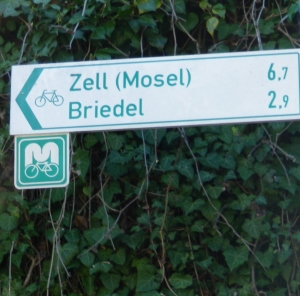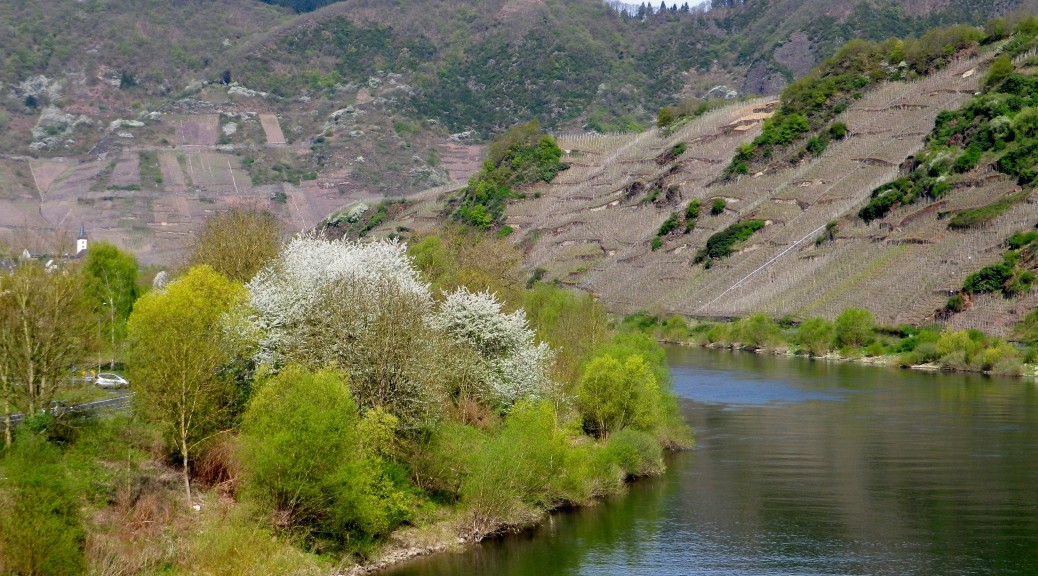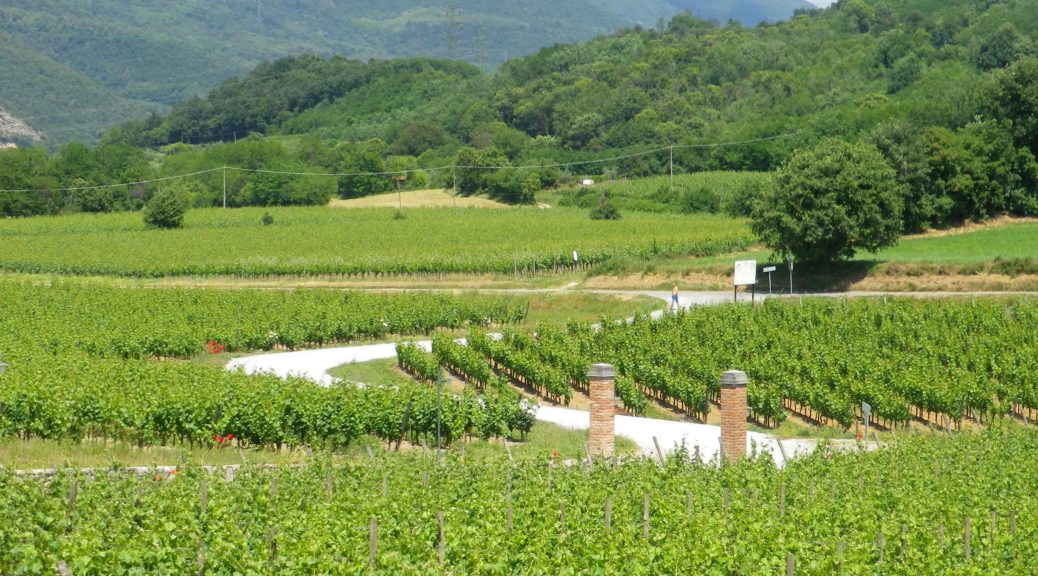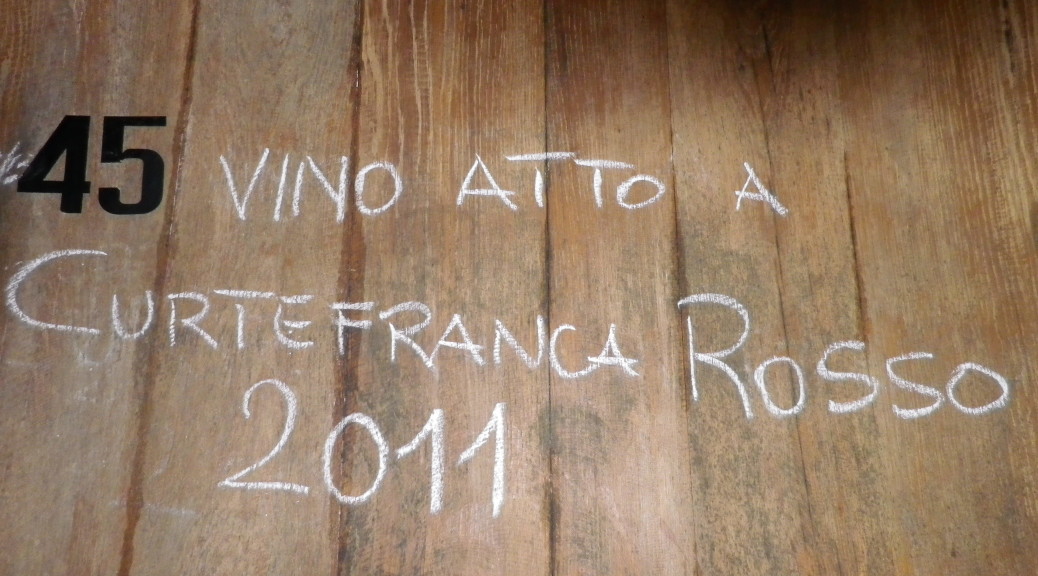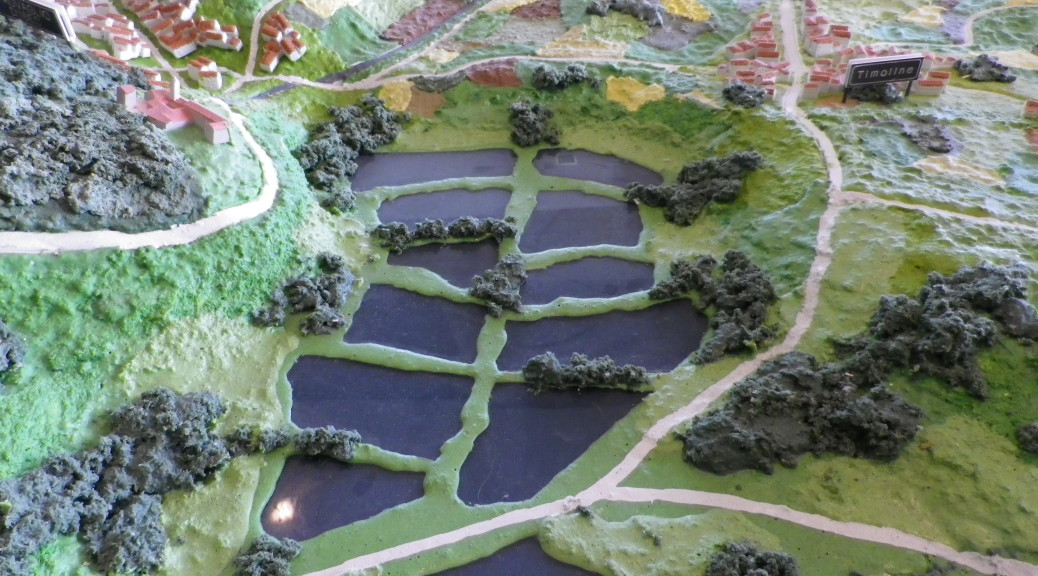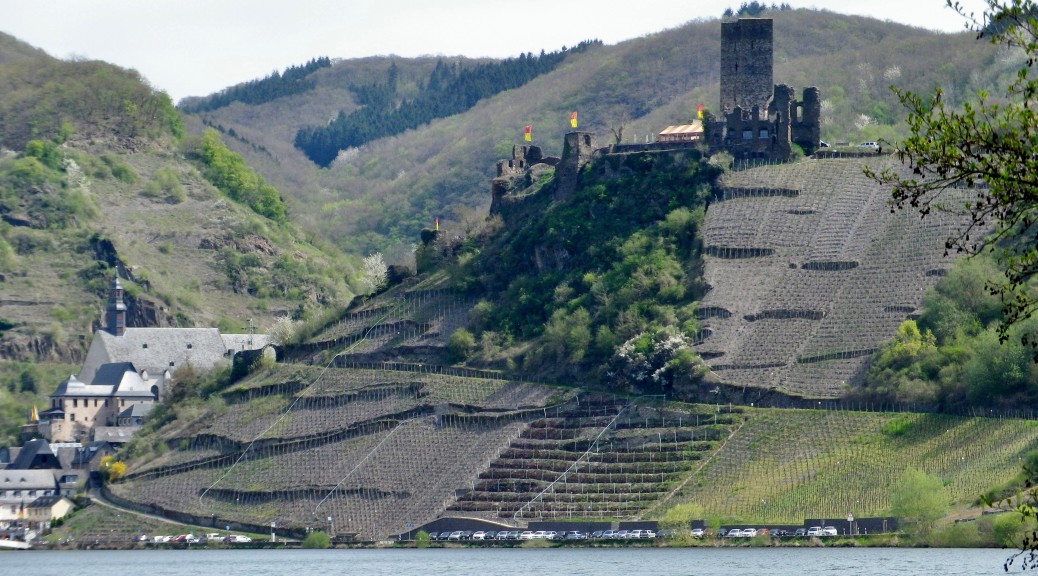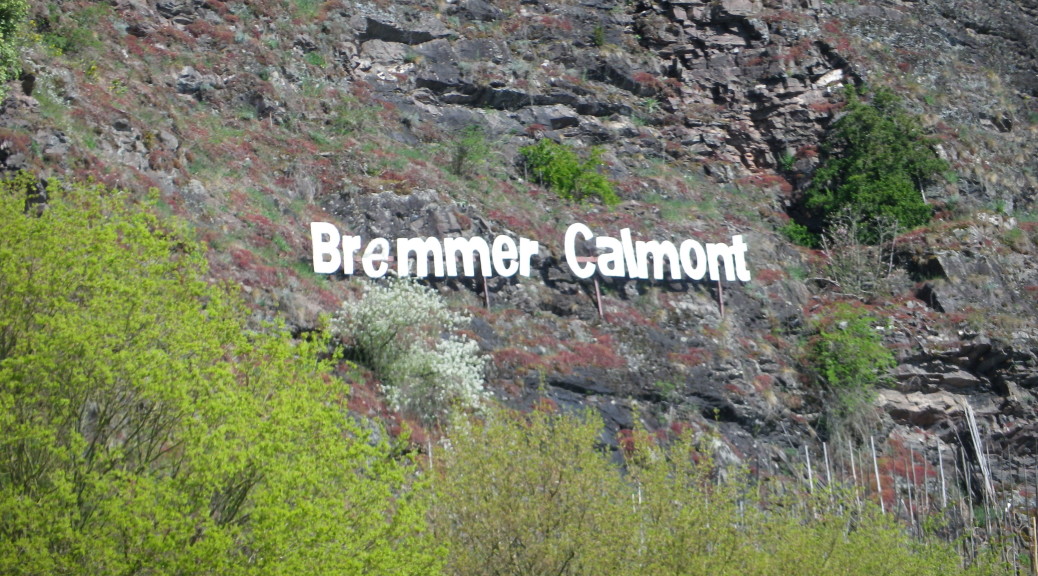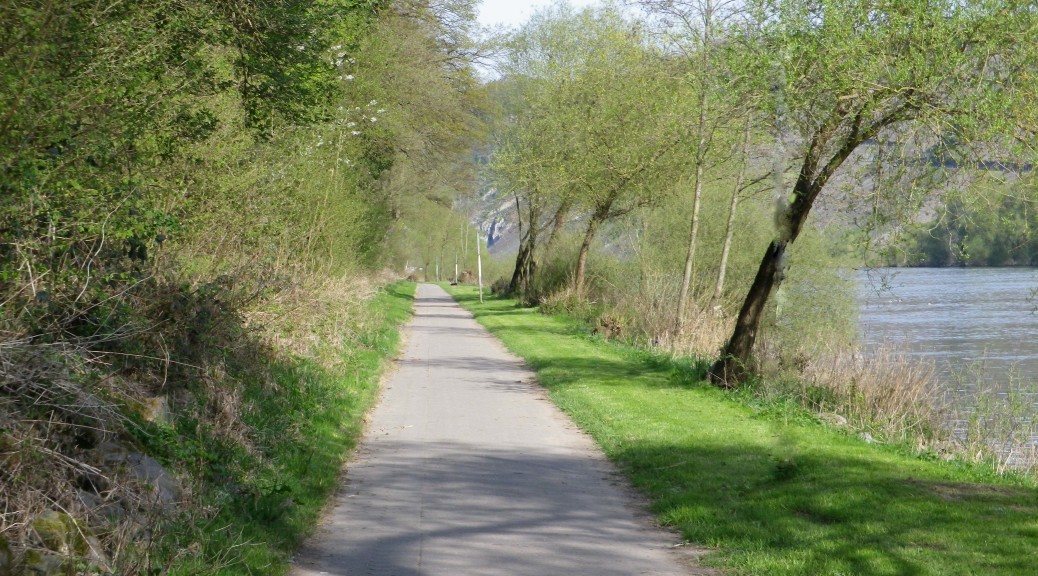Monthly Archives: June 2015
Franciacorta’s Saten Cycling Itinerary
Italy has a lot of wines, and a lot wine regions. In addition to still wines, Italy has several versions of sparkling wine. Prosecco and Asti Spumante are perhaps the best known. The region of Franciacorta, a relative newcomer to Italian sparkling wine production, seems to outshine them all though, not only in quality sparkling wine production, but also in wine tourism.
Franciacorta is an ideal location for a wine-themed biking vacation. The lake of Iseo, in addition to being a beautiful, scenic backdrop, helps to moderate temperature; the hills shelter you and the vines from excessive wind; wine production, an old tradition here, resulted in small, established wine villages, linked by country backroads. Best of all, it is quiet and laid-back: I encountered almost as many people cycling as driving on some of these backroads. With this in mind, the regional tourism board has created some well-thought out, marvelously scenic, wine-themed routes. Each of the numbered five routes was color-coded and cleverly named after one of Franciacorta’s famed sparkling wine products. (See the trail Nutshells: Green Trail and YellowTrail.)
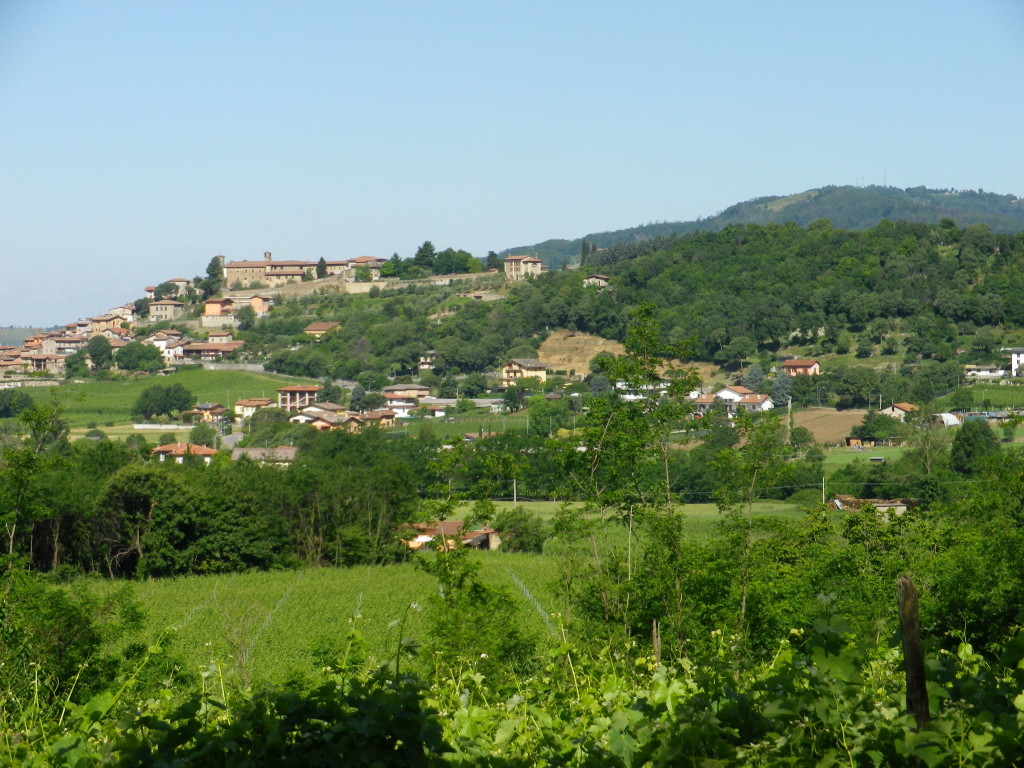
Wine Notes: Franciacorta
What I Learned
The term Franciacorta refers to a region in north central Italy. The term Franciacorta also refers to a production method. Thirdly, this same term refers to its sparkling wines.
Franciacorta Saten: Trail in a Nutshell
Trail Name(s): Itinerario 1/Percorso Giallo (yellow)/Franciacorta Saten
Trail Type: Mid-distance circuit; mostly hard-packed gravel or paved in built up areas, well maintained and marked.
Length: total: 30 km/18.25 miles
Convenient to: Lake Iseo, Italy, Brescia, Italy, and about 75 minutes from Milan.
Marking: Brown rectangular sign with white and yellow writing (“Itinerario 1”, “Percorso Giallo” “Saten”)
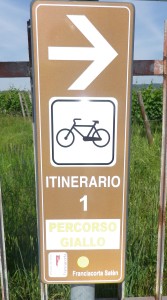
Riding for Riesling, Part II
As the Moselle flows through Germany, its geography changes. Three designated sections: the Upper Moselle which flows from the French border to fabulous Roman-era Trier; the Middle Moselle; and finally, the Lower, or Terraced Moselle which goes from Zell to the mouth of the river at Koblenz; are quite distinct.
The Moselle begins quite gently, and gradually roughens, sharpening its curves on the unyielding slate hills. By the Lower Moselle, slopes become steeper, rock predominates, and the river forms several of its most backbreaking oxbows between Briedel, Zell and Cochem. Here, to maximize vineyard space, vintners must build terraces.
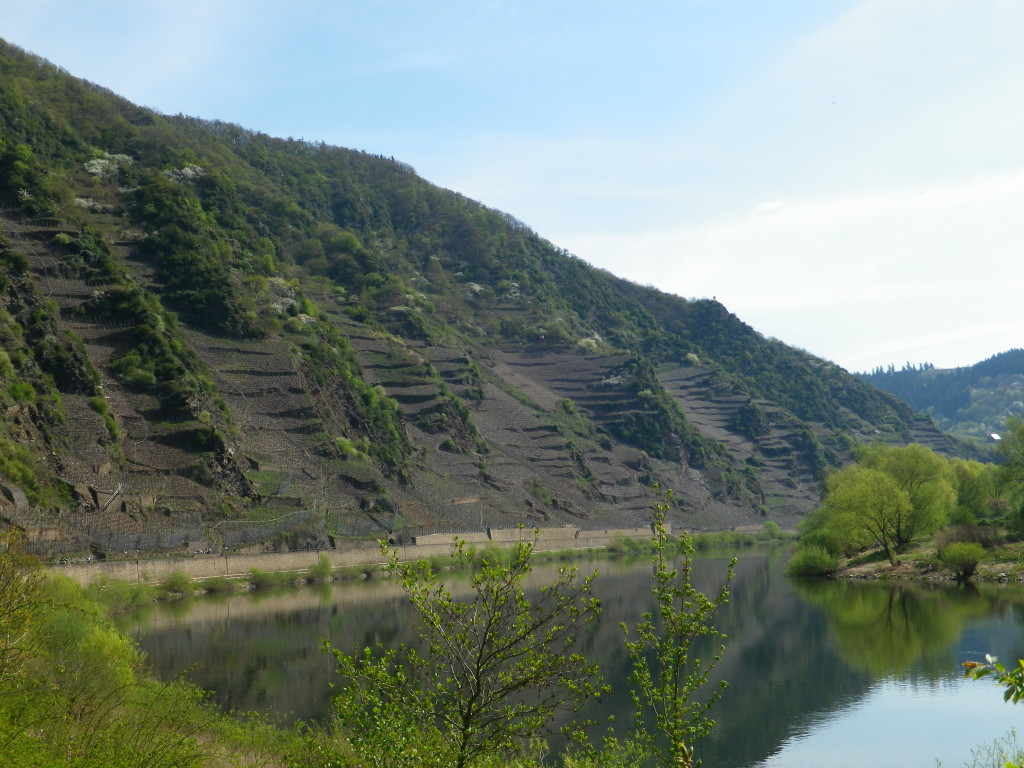
Wine Notes: Lower Moselle
What I Learned:
Germany’s Moselle River region is as an important wine-producing area in Germany as the Rhine region. It is the oldest wine producing region in Germany.
Germans refer to the Moselle sections as Upper, Middle and Lower, beginning at the French-Luxembourg border, and continuing to Koblenz downriver, in the Lower Moselle section.
Moselle Bicycle Trail: Trail in a Nutshell
Trail Name: Mosel Radweg (Moselle Bike Trail)
Trail Type: Long distance bike trail; almost exclusively paved, well maintained, well-marked.
Length:
Total: (Thionville – Koblenz) approximately 277 kilometers/172 miles
My Segment: (Bernkastel – Cochem) approximately 80 kilometers/49.75 miles
Convenient to: Trier or Koblenz, Germany
Marking: A white letter M and white bicycle icon on a square green placard
